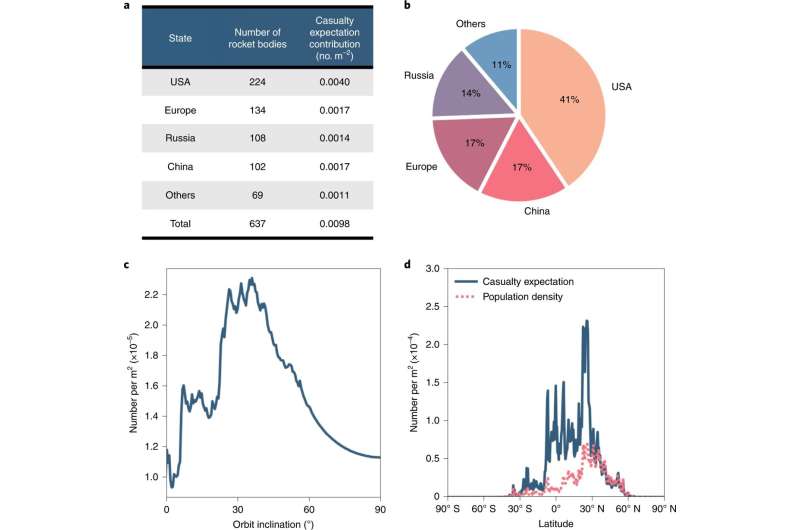A quartet of researchers at the University of British Columbia in Canada has calculated that the risk of one or more people being killed by uncontrolled rocket descents over the next decade is approximately 10%. In their paper published in the journal Nature Astronomy, Michael Byers, Ewan Wright, Aaron Boley and Cameron Byers, describe their study of casualty risk in the coming years due to rocket parts falling from the sky and what governments could do to make spaceflight safer for people on the ground.
Over the past several decades, rocket parts, satellites and even space stations have fallen back to the Earth after fulfilling their missions. To date, no one has ever been killed by falling space debris, though one person is believed to have been struck: Lottie Williams was hit by debris while walking in a park in 1997. But as the space age has matured, more rockets and satellites have been sent aloft, and that trend is expected to continue. In this new effort, the researchers calculated the likelihood of one or more people being struck or killed by such objects if current practices continue.
The researchers looked at the current number of rocket launches and the number expected to go up over the next decade. They also looked at what happens to rocket parts when they fall back to Earth and where they tend to land. The researchers found, as expected, that the majority fall into the ocean, because it covers so much of the planet. But they also found that as the number of rockets launched rises, so does the chance of one or more of them coming down in a populated area—they report that the chance of one or more fatalities in the coming decade is approximately 10%.
They also discovered that risks are higher for people living in certain places. This is due to the flight paths of rockets that are sent up. They found that the risks were highest in places like Indonesia, Mexico and Nigeria. The conclude that all of the agencies sending craft aloft have the capability of conducting controlled descents of rockets and their parts, but choose to not to do so because of the costs involved.
Explore further
© 2022 Science X Network



